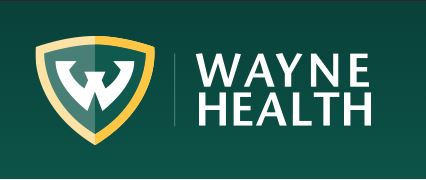Tragedy to Triumph: Wayne Health surgeons reattach Michigan man’s hand
November 7, 2022

Life took a detour for 19-year-old Kyle Smith on July 27, 2021.
It started out as a typical day at the lumberyard in New Boston, Mich., where Smith had been working while finishing high school. But it turned to tragedy when, while cutting 2 x 4s on a table saw, he severed his left hand.
In shock and excruciating pain, Smith looked to a coworker for help. They ran into the lumberyard office, where faces dropped when they saw the extent of his injury. His boss took quick action, calling 911, then helping to compress the bleeding arm with a bandage and ice. A coworker retrieved the hand from outside and it was placed in a Ziploc bag with ice.
About four minutes later, Smith was in an ambulance on his way to Detroit Receiving Hospital.
“When it happened, I was thinking about the future – how I lost my opportunity to live a nice life at age 18, and what my life would be like with one hand,” said Smith, who lives in Carlton, a small village in Monroe County.
An emergency medical services technician told him there was a chance doctors could reattach his hand, and the ambulance driver assured him that Detroit Receiving was the best hospital in the area for treating trauma cases.
Meanwhile, Wayne Health plastic and reconstructive surgeon Ahmed Hashem, M.D., a clinical professor of Surgery for the Wayne State University School of Medicine, was paged by a medical student about an incoming patient with an amputated hand.

“In these types of surgeries, we are racing against time, because amputated parts are only viable for six hours from the moment of injury,” Dr. Hashem said. “After that, muscle is dead and cannot be reconnected.”
Dr. Hashem raced to the emergency room to examine the amputated hand under amplification to determine if reattachment was possible. He explored and tagged arteries, nerves and tendons.
Once the feasibility of reattachment was determined, Smith was rushed into an operating room.
“Reattachments are complex surgeries,” Dr. Hashem said. “It’s not a one-man show, it’s a team.”
Along with Dr. Hashem, Smith’s surgical team included plastic surgery fellows Ashraf Elzanie, M.D., and Gretchen Stieg, M.D., along with Kerellos Nasr, M.D., an orthopaedic sports medicine and trauma surgeon; and anesthesiologist Katie Zacharzewski, D.O., supported by surgical nurses and technicians.
In a grueling and complex 14-hour surgery, Dr. Nasr performed bone shortening, bone alignment and bone fixation with plates and screws. The plastic surgery team removed dead tissue from the area of injury and reconnected the tendons, nerves, arteries and veins of the forearm to the hand. Critical blood flow to the reattached hand was re-established with the reconnection of arteries and veins. Arterial reconnection had to be done twice due to the extent of the injury.
The demanding surgery required the alignment of 11 tendons on the front side of Smith’s forearm, 12 tendons on the back side, and alignment of two major nerves to ensure good functional outcome.
Smith was hospitalized at Detroit Receiving for nine days after surgery. After one night at home, he developed a bleeding complication and returned to the hospital for surgery to stop the bleeding, followed by a five-day hospital stay.
Since then, Smith said, his recovery has been “pretty phenomenal.”
Dr. Hashem said Smith is well on his way to restored function, has reasonable motion and is starting sensory recovery.

“Kyle’s recovery exceeded my expectations. He has recovered substantial function to his left hand with satisfactory motion and sensation,” he said. “He is able to use it in everyday activities without issues. I am really impressed with the outcome so far. He is continuing to improve fine-motor function and greater sensory discrimination.”
“Recovering my hand is my full-time job right now,” said Smith, who attends occupational and physical therapy three times a week, and has regular check-ups with Drs. Hashem and Nasr. “I can open, close, squeeze, grip and lift five-pound barbells with my hand. I am missing tiny movements in my hand, but I am getting sensation back in the wrist and palm. I can’t pinch my fingers around something, so picking a Q-tip up off the floor the other day was a challenge.”
It takes at least a year to reach the full extent of recovery after reattachment surgery.
Smith said Drs. Hashem and Nasr “are like my personal doctors. They are always checking in, making sure I am okay. They have all the answers, and I never had any doubt with them. They are phenomenal.”

As for what’s next, Smith said the injury “made me a better person. It definitely taught me to be humble … . And I make smarter decisions now and double- and triple-check everything. As soon as I have the ability, I am ready to take on life.”
Dr. Hashem joined Wayne Health in October 2020. He is a clinical professor of plastic surgery at Wayne State University School of Medicine who enjoys teaching and research because it allows him to remain at the leading edge of his field and contribute to the advancement of his specialty.
Dr. Hashem is a fellow of the Royal College of Surgeons of England and completed three years of advanced specialty training at Cleveland Clinic honing skills in reconstructive microsurgery, craniofacial surgery and cosmetic plastic surgery. Before that, he completed advanced training in pediatric plastic surgery at Nationwide Children’s Hospital in Columbus, Ohio, and hand surgery training at the French Institute of Hand Surgery in Paris.
This advanced training in multiple subspecialties of plastic surgery qualifies him to perform reconstructive plastic surgery, cranio/maxillofacial surgery, hand surgery, pediatric plastic surgery, as well as cosmetic surgery. For an appointment with Dr. Hashem, visit https://www.waynehealthcares.org/appointments/ or call 877-929-6342.
